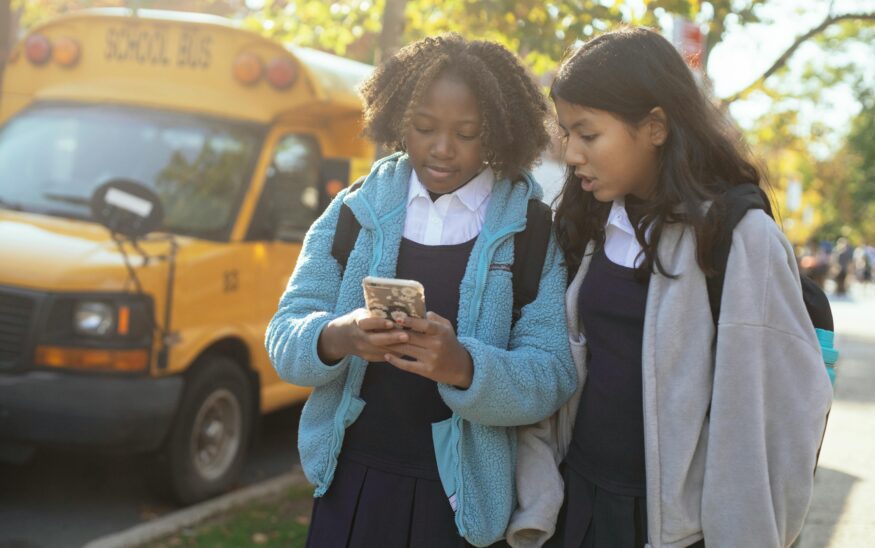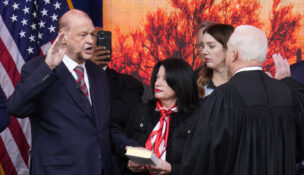Schools welcome new law that restricts cell phone use
Jamar Younger Arizona Capitol Times//September 6, 2025//
Schools welcome new law that restricts cell phone use
Jamar Younger Arizona Capitol Times//September 6, 2025//
Key Points:
-
A new law requires school districts to create policies restricting the use of cell phones and social media
-
The law provides flexibility on how schools can implement their policies
-
Law intended to reduce distractions in class
Many Arizona school districts have ushered in the school year with new or updated cell phone restrictions for students as officials prepare for a new law to take effect this fall.
The law calls for school districts and charter school governing boards to create policies that restrict the use of social media, cell phones and other devices during the school day. It will still allow students to use these devices and platforms for educational purposes or emergencies.
The measure was introduced by Rep. Beverly Pingerelli, R-Peoria, last legislative session as HB2484, and was signed into law by Gov. Katie Hobbs in April.
Some school districts had already implemented policies prior to the law’s passage while others had to develop more coherent restrictions to ensure schools were aligned with the new law.
The Arizona School Boards Association provided policy guidance and other resources to help various governing boards implement the law and communicate with district personnel, parents and students, said Arizona School Boards Association spokeswoman Heidi Vega.
Some districts sought guidance on issues such as potentially dealing with pushback from parents and students, and developing disciplinary policies, Vega said.
Some educator advocacy groups expressed support for the new law, but wanted to make sure the measure allowed flexibility and local control for school districts, as opposed to an outright ban.
“There’s kind of an obvious issue that cell phones can be quite the distraction during the school day. However, they can also be tools,” said Paul Tighe, Arizona School Administrators executive director, who was previously superintendent of the Saddle Mountain Unified School District in Tonopah. “So it’s good to have flexibility and not have an outright … no phones allowed in schools from a state level. Some communities may have chosen that, and that’s fine, but there are instances where the technology can be used as an instructional tool during a lesson.”
A number of districts have implemented policies that vary by grade level, with high school students having more ability to use their phones throughout the day than those in the lower grades.
But students of all ages have to put the phone away when class starts.
“We want to limit the distraction that phones can cause in classrooms,” said John Carruth, superintendent of the Vail School District near Tucson.
Vail’s elementary and middle schools already enacted a policy that called for cell phones and other devices to be stowed in a student’s backpack during the school day, Carruth said.
There were also restrictions in Vail’s high schools, but the district integrated those practices to ensure consistency across all the campuses after the law was passed, he said.
High school students are required to keep their cell phones out of sight during class time but can use the devices during lunch and passing periods. The district also provides laptops for all high school students so there’s less of a need for students to rely on their devices during classroom instruction, he said.
“When the law came down, really what that did is … it just allowed us to provide some backing to that direction at the high school level,” he said. “And now it’s uniform that students are not to use their electronic device during class time.”
If a student refuses to comply, the school district uses a “progressive discipline” approach that can start with a warning and escalate to an in-school suspension, he said.
District officials have also considered the trends and effects of social media, and worked with students to develop better habits, he said.
“What we heard loud and clear from our high school folks is they do not want to be the cell phone police,” he said.
Other school districts have approved similar cell phone and device policies.
Mesa Public Schools’ guidelines also limit cell phone use for elementary and middle school students, who can only use their phones before and after school in campus common areas.
The district’s high school students can use phones before and after school, during lunch in designated areas and during passing periods unless an individual school has stricter policies.
The Buckeye Union High School District has restrictions that are similar to Vail and Mesa’s guidelines for high school students.
The rise of cell phones and social media — and the accompanying distractions — have changed how teachers deliver lessons, said Marisol Garcia, president of the Arizona Education Association.
The new state law is a useful tool that allows district teachers and staff to get on the “same page” in regards to focusing more on teaching and less on those distractions, Garcia said.
“It is a really good way of ensuring that we are all focused on instruction,” she said. “But cell phones have 100% altered the way that teaching is delivered in 2025.”














































